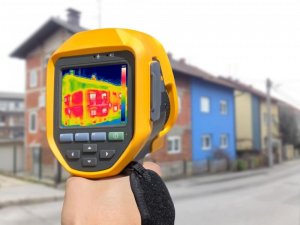Sign-In or Create an Account to find your purchasing solution
Become a registered Edgetech partner to start using our latest insulating technology in your glazing systems.
Tel: +44 02476 639931
Email: ukenquiries@edgetechig.com
Orders: ukorders@edgetechig.com

A new study shows that homes in many European countries are three times as thermally efficient as Britain’s. Edgetech’s Chris Alderson argues it’s yet more evidence the UK needs a retrofit revolution.
Last year, Britain became the world’s first major economy to commit itself to going carbon neutral by 2050.
Now, new research has highlighted the scale of the challenge ahead of us if we’re going to achieve that extremely ambitious target.
A study of 80,000 homes by German tech firm tado GmbH found that British properties lose heat up to three times quicker than those in other European countries.
Researchers measured how much heat homes from each country lost over five hours when the temperature inside was 20°C, and the temperature outside was 0°C.
The average Norwegian home lost just 0.9°C. German homes lost just 1°C. Sweden, Denmark and Austria were close behind at 1.2°C.
But the average for British homes lagged far behind at 3°C.
There won’t be a single, simple explanation for the gulf that separates homes here and those on the continent – but one key factor is likely to be the age of Britain’s housing stock.
According to a 2015 survey by the Department for Communities and Local Government, 20% of Britain’s houses were built before 1919, and 30% were built before the Second World War.
In Europe, it’s a different story. Huge swathes of the continent were destroyed in the War, which meant many towns and cities had to be rebuilt and went on to offer more modern standards of energy efficiency as a result.
While some parts of the UK underwent heavy bombing, our housing stock survived the six-year conflict relatively unscathed.
But the reason those figures are so significant is that decarbonising UK homes is vital if we’ve got any chance of meeting that 2050 target.
Home energy accounts for around 20% of our total carbon emissions, with three-quarters of it produced by space and water heating – which would be enough to make thermal efficiency a key priority even on its own.

But it’s made even more critical by the fact that other sectors of the economy are much harder to decarbonise – making big leaps in home thermal efficiency will be difficult, but nowhere near as hard as achieving the same in farming and aviation, for example.
So far, though, the government seems to be focusing on ensuring thermal efficiency in new-build properties, rather than existing ones.
From late 2019 through to February of this year, it ran a consultation, designed to help decide how Building Regulations change in light of the 2050 target.
At the time of writing, the government appears to favour a course of action that would cut the carbon output of UK new builds by 31% using solar panels, air-source heat pumps, and other high-tech solutions. The GGF voted to endorse those proposals earlier this year.
However, there also needs to be a major focus on retrofitting existing properties – and bringing them closer in line with the levels of thermal efficiency seen in Norway, Germany and elsewhere.
We need to be clear about the scale of the challenge. Four out of five of the homes people will live in by 2050 have already been built.
Research by the Institution of Engineering & Technology and Nottingham Trent University estimates that around 26 million UK homes need retrofitting between now and 2050.
And as an industry and as a society more broadly, that means we need to be doing everything we can to make that happen. It’s an enormous challenge, but with enough commitment, it’s very possible.
In the Netherlands, they’ve been experimenting with a radical but highly successful approach they call Energiesprong – ‘energy leap’ in English.
Its proponents have calculated that although more costly in the short-term, it’s far more effective to comprehensively retrofit homes in one go, rather than doing it in fits and starts.
As part of the Energiesprong process, homes are able to achieve near carbon-neutrality with the installation of rooftop solar panels, and a highly thermal efficient external envelope.
The only catch – it costs around £60,000 per home.
As an industry, there are steps we can take to help the UK achieve net-zero by 2050.
The widespread adoption of installation products like Trufit – our impregnated installation window sealing tape, which delivers much greater thermal efficiency than silicone – would have an impact.
So would selling the benefits of triple-glazing, ‘clever’ double-glazing and solar control glass.
But given the scale of the challenge, and the enormous costs involved, it’s clear that we’re never going to achieve that net-zero target without huge government investment.
The cost of a comprehensive retrofit is far beyond what most homeowners could afford – and without incentives, it seems highly unlikely that many would take those drastic steps even if they could swallow the cost.
In other words, we’ve all got a part to play in reaching net-zero – but the government has to take the lead.
For more information please call + 44 (0) 2476 639931 or visit www.edgetechig.co.uk
Please fill out the form below to a find a local supplier. Once we've found you closest suppliers you will be able to contact them all.
Your enquiry has been successfully submitted. You should receive an email or callback with 24-48 hours.
Return to the homepage